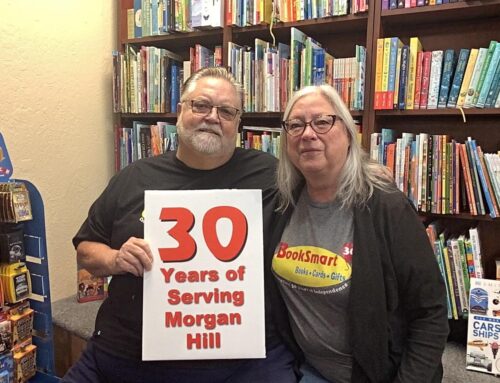Studies show Californians willing to pay $50-a-year tax to alleviate problem
Published in the July 8-21, 2015 issue of Morgan Hill Life
By Conway Collis

Conway Collis
Almost a quarter of California’s children live in poverty, limiting the ability of millions of children to realize their potential and putting California’s future economy at risk. The consequences for poor children are devastating and begin early.
About 60,000 children in Santa Clara County are living in poverty, and this number in one of the world’s most affluent areas is increasing. Child poverty is now spread out throughout the county in neighborhood pockets in historically poor areas such as eastern San Jose as well as parts of Morgan Hill and Gilroy.
An income gap in achievement already exists when children enter kindergarten and the impact doesn’t stop there. Nearly 54 percent of high school dropouts and about 33 percent of those with only a high school diploma are poor. High poverty rates contribute to the mismatch between workers’ skills and available jobs and overwhelm the ability of the tax base to support increased demand for services.
In addition to an eight-month study by the Stanford University Center on Poverty and Inequality in conjunction with GRACE (Gather, Respect, Advocate, Change, Engage) to determine which programs have been proven to work and are the most effective, two surveys were conducted in October 2013 to better understand Californians’ perceptions of child poverty. One was a statewide telephone survey of 601 registered voters. The second was a telephone survey of 300 low-income parents who have a minor child at home and earn less than 150 percent of the federal poverty line. Last month, I reported the findings of those surveys to leaders of Morgan Hill and Gilroy at a meeting at the Gilroy Public Library.
Key findings from the first survey were that 63 percent of voters agreed that state government has a responsibility to ensure that children do not live in poverty.
Sixty-one percent of voters agreed that reducing child poverty is a much higher priority than reducing taxes, and 64 percent of voters were willing to pay $50 more per year in state taxes to reduce the number of children living in poverty.
The findings are significant in that a majority of voters from across political party lines view reducing poverty as a priority and that they are willing to pay more in tax to do it.
The Stanford study is important because it shows that there are proven science-based approaches that work and are cost-effective. That is why those are the approaches that are recommended in the GRACE plan. Californians are concerned about this problem but they want to implement programs that work. The Stanford study shows that we now know which programs work.
GRACE is a ministry of the Daughters of Charity. Our job is to identify a comprehensive approach to save lives by reducing child poverty in California and to help educate Californians about the extent of the crisis and that there are proven ways to address it. We are trying hard to make that information generally available.
We hope to motivate people to take action. The nature of that action is up to individuals, religious and community groups and advocates to decide.
GRACE’s approach to significantly reduce poverty includes a package of programs and services the research indicates will provide equal opportunity for all California children. The solutions treat the causes of poverty by intervening early. For example, pre-natal care and voluntary home visiting services for children from birth to 5 years old improve child health outcomes, prevent entry into the child welfare system and improve child development. Making early childhood education and childcare available to all poor children up to age 12 prevents income achievement gaps. GRACE’ s approach also provides immediate assistance to poor families by creating a state earned income tax credit, increasing CalWORKS grants and providing job training.
There are a variety of ways a plan might be funded. First, this is an ideal area for individuals, religious organizations and community groups to join together to address this crisis. This is not someone else’s problem; this is our problem. We have a shared responsibility. There has also been legislation introduced on aspects of the problem and various groups have announced their intention to explore state initiatives. These are all approaches people should study and consider.
The findings from the FM3 public opinion research conducted in January found a marked change in the opinions of California’s voters. Seventy-six percent believe child and family poverty is as serious a problem as the quality of local schools and crime. Eighty-five percent believe that additional services are needed to reduce the number of children and families living in poverty. Seventy-eight percent believe that additional funding is needed to reduce the number of children and families living in poverty. Eighty-six percent believe that the best way to reduce child poverty in the long term is to ensure that all children have training to develop their skills.
Clearly California voters recognize that poverty is a big problem and an overwhelming majority believes that additional services and funding are needed to address it.
Conway Collis is the president and CEO of GRACE. He wrote this guest column for Morgan Hill Life.






